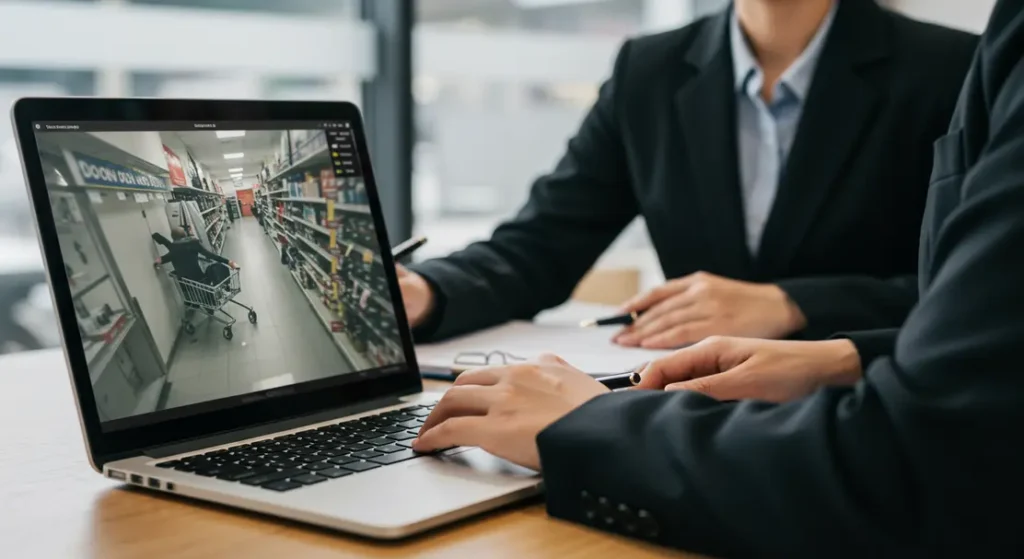The Role of Surveillance Footage in Personal Injury Claims
Surveillance cameras capture daily life across Lancaster, from intersections along Sierra Highway to bustling shopping centers like Lancaster Marketplace. When accidents happen, this footage can become essential evidence in personal injury cases. If you’ve been injured in a car accident on the Antelope Valley Freeway or suffered a slip and fall at a local business, securing the proper legal representation is crucial. A Lancaster personal injury lawyer can help you access and leverage surveillance footage to strengthen your claim and pursue the compensation you deserve.

The Importance of Evidence
In personal injury cases, evidence is crucial for building a claim, and surveillance footage plays a key role in accurately establishing the facts compared to subjective eyewitness accounts. This video evidence provides a perspective on the events that helps to clarify what happened during the incident and effectively supports the case for the injured individual.
How Surveillance Footage Supports Claims
Footage from surveillance cameras can support claims by offering a record of an event. This video shows the time an accident occurred and reveals specifics such as weather conditions, light levels, and individuals present at the scene. This data can back up the injured person’s account and present a solid case in a legal setting.
Challenges in Obtaining Footage
Despite its importance, obtaining surveillance footage can be tricky. Accessing camera recordings typically involves working with the equipment’s owners. Companies may have rules that limit access to tapes or delete footage due to storage constraints. Legal teams often need to act quickly to secure videos before they are lost as evidence, which may require a formal request or subpoena to obtain the needed material.
Legal Aspects
Various legal aspects become evident when surveillance footage is incorporated as evidence into proceedings. Privacy regulations dictate the acquisition and utilization of recordings, imposing rules that legal professionals must navigate. They must ensure that the gathering of video material upholds privacy rights while mitigating the risk of complications.
Impact on Settlement Negotiations
Footage from surveillance cameras can significantly impact discussions aimed at reaching agreements in legal matters. Settlement talks can shift when proof is available, complicating arguments for the opposing sides. Against this backdrop, defendants may settle rather than prolong the matter in court. This accelerates the process and saves time and money for everyone involved.
Responsibility in Courtroom Proceedings
Video recordings frequently play a crucial role during trials and hearings. Judges and jury members rely heavily on video footage to understand the nuances of a case. The victim reinforces their position by showcasing clear video footage, increasing the likelihood of a favorable verdict. Furthermore, visual evidence can shape opinions, alter perspectives, and influence judgments.
The Ethical Considerations
Utilizing surveillance videos in personal injury cases raises concerns, as they provide insights but also highlight privacy and consent issues. Experts must navigate the challenge of gathering evidence while respecting individual rights and addressing these ethical concerns carefully to maintain fairness and justice in their practices.
The Future of Surveillance in Claims
The use of surveillance footage in cases is evolving as technology advances. Better camera quality and easier access to recordings offer more substantial evidence for personal injury lawsuits. Innovations such as artificial intelligence and facial recognition could enhance how footage is analyzed and create opportunities for legal professionals to leverage these changes. Staying updated on these advancements will help ensure that surveillance footage is effectively utilized in claims.
Summary
Surveillance videos undoubtedly impact injury cases by providing impartial visual proof essential in legal matters. However, acquiring these videos and addressing the associated ethical considerations remain challenges. With ongoing advancements, surveillance’s influence in this field will only grow, shaping personal injury claims in the foreseeable future.
